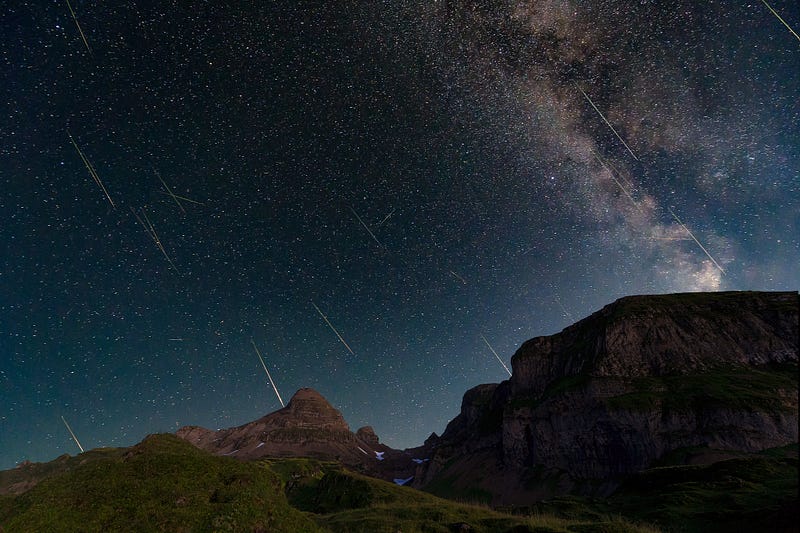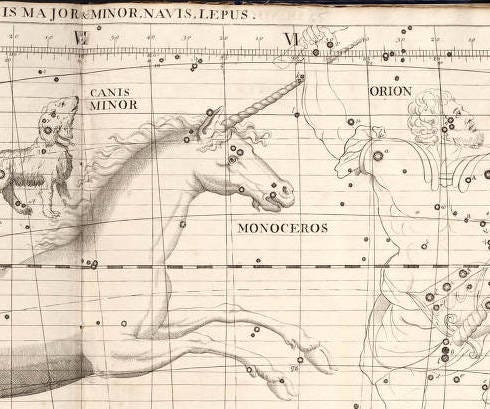Unicorn Meteor Shower: A Celestial Spectacle Awaits Tonight
Written on
Chapter 1: Overview of the Unicorn Meteor Shower
The Unicorn meteor shower graces our skies annually, but tonight holds the promise of something extraordinary, possibly dazzling observers with a flurry of shooting stars—though this display will be brief. Each year, as Earth traverses various debris trails, we experience an array of meteor showers. One of the lesser-known events is the Unicorn meteor shower, peaking around November 21. This year, there is optimism that the night’s spectacle may deliver numerous shooting stars each minute.
The Alpha Monocerotid meteor shower is commonly referred to as the Unicorn meteor shower due to its loose association with the constellation Monoceros, symbolizing the unicorn. Typically, the Alpha Monocerotids are not particularly noteworthy compared to other annual meteor showers. However, occasionally, Earth encounters a densely packed section of the debris trail, resulting in a breathtaking display of meteors.

A spectacular meteor shower could occur tonight—though nothing is guaranteed. Image credit: Lukas Schlagenhauf/Flickr (CC).
Chapter 2: Scientific Insights
NASA’s Ames Research Center scientist, Peter Jenniskens, along with Esko Lyytinen from the Finnish Fireball Network, suggest that sky watchers might witness an impressive display tonight. This phenomenon arises when Earth moves through the debris cloud of an unidentified comet, with fragments igniting as they enter the atmosphere.
“This dust trail can persist near Earth's orbit for centuries, creating outbursts that can last for decades. The trail's width is quite narrow,” the researchers noted in Meteor News. The comet responsible for this debris trail is a long-period comet, taking over 200 years to complete a single orbit around the Sun.
The constellation Monoceros, the focal point of the meteor shower, can be difficult to spot due to light pollution, as its stars are relatively faint. However, it is located just east of Orion, whose three-star belt is easily identifiable.

Chapter 3: Expectations for Tonight's Shower
While the potential for a spectacular show exists, history tells us that this shower has produced remarkable displays in 1925, 1935, 1985, and 1995. Should a burst occur, the conditions tonight—with a crescent moon—will allow for better visibility of the dimmer meteors. Observers might see anywhere from 100 to 1,000 shooting stars during the peak.
If the Alpha Monocerotids do indeed create a burst, the peak will last for approximately 40 minutes, with the most intense activity confined to a brief 15-minute window. Unlike typical meteor showers that can last for days, this one’s peak is focused, necessitating precise timing. The show may commence up to 20 minutes prior to the anticipated start time of 11:50 PM EST.
Therefore, this evening, venture outside around 11:25 PM EST (8:25 PM PST), directing your gaze toward the east or southeast (be sure to dress warmly and bring refreshments). You could be treated to one of the most remarkable meteor displays seen in decades.
Did you enjoy this article? Subscribe to The Cosmic Companion Newsletter!
Chapter 4: Video Resources
Discover the mesmerizing "A Unicorn Meteor: Alpha Monocerotids 2019" to learn more about this celestial event.
Watch "How to watch upcoming 'unicorn meteor shower' in Tampa Bay" for tips on how to best enjoy this astronomical phenomenon.